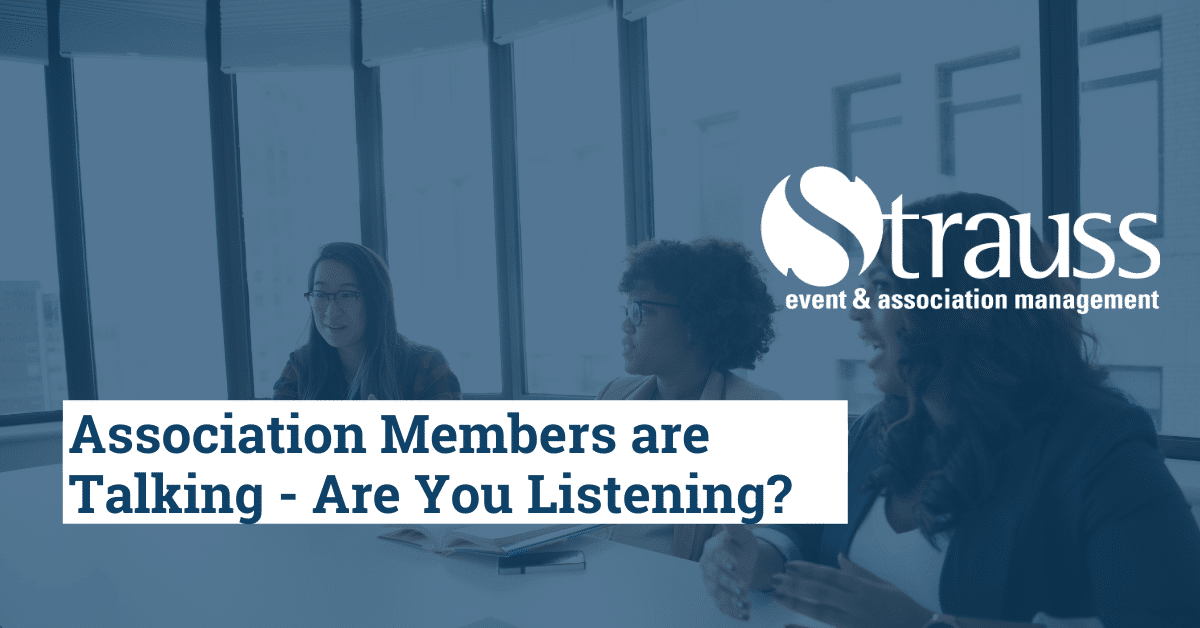In association leadership, we know how important it is to members that they feel heard and seen. With this in mind, we survey members, request feedback, and provide ample opportunity for them to communicate their needs and priorities. This process is extremely important, but if we aren’t actively listening and allowing members’ voices to impact our decisions, what will we achieve? Active listening is the foundation of effective communication, and it is critical if we want members to feel truly heard, understood, and served.
That’s Not What I Ordered!
Imagine you’re out for dinner. Your table is ready, and as you follow your server to your seat, you are already planning your order. The one thing you made sure to the server knew, was that you absolutely cannot eat the jalapeno remoulade. The evening started fine, although you received the wrong drink. Deciding to make the most of your evening, you order your meal without complaint. When you order your food, you clearly state your allergy and request to please have replacement sauce. The server says that’s not a problem, that they will consult the chef, and then off into the kitchen.
Your much anticipated meal arrives, and right in the middle of your plate, is a perfectly placed dollop… of remoulade. How could this have happened when you clearly stated your needs? Now your botched drink order feels like a bigger insult. Has your server been listening at all? This place has terrible service, and you want to speak to a manager. What started as a positive relationship quickly spiraled into anger and dissatisfaction as soon as you felt unheard, and that nobody seemed to be listening.
Hearing or Listening
Joseph DeVito, author of The Elements of Public Speaking (7th ed.) has divided the listening process into five critical stages: receiving, understanding, remembering, evaluating, and responding.
Stage 1: Receiving
The first stage of the listening process is the receiving stage, which involves hearing and attending. Broken down in basic physiological terms, hearing is the faculty of perceiving sounds. The clearer the sound, the easier the listening process becomes. Coupled with hearing, attending is the other half of the receiving stage. Attending is the act of accurately identifying and interpreting the sounds we hear and giving them context as words.
For associations, this stage often occurs digitally. Online surveys are filled out by members after an event or before an AGM. Questions in these surveys must be clear so that members will be able to give their best feedback or suggestions. The survey must also be readily available to members so that everyone can be heard.
Stage 2: Understanding
Lumen Learning states that the understanding stage is where the listener determines the context and meaning of the words that are heard. This allows the listener to process the key facts, sort the information they are receiving, and assign importance, ultimately allowing them to decide how to best use the information. This stage is a key part of the process for associations. It is equivalent to the association’s collecting and comprehending the feedback or suggestions that members give them.
Stage 3: Remembering
Now that the listener has the facts, if they were truly listening, they can move on to the remembering stage. Harvard Business Review says that within eight hours, people tend to forget up to half of what they have heard. This can be a common error in association leadership, and one that unfortunately, often leads to dissatisfaction. There are many tools and tricks to help association leaders to remember conversations with Board members, members, and stakeholders. Simply writing everything down in a notebook, diarizing deadlines and meetings in our calendars, or the old-fashioned method of sticky notes on the wall can make a world of difference in our ability to remember what we’ve heard and discussed.
Stage 4: Evaluating
The fourth stage in the listening process is evaluating the message. The feedback we receive from our association members might seem logical and may resonate with our general perspective. On the other hand, we may find ourselves confused, finding the feedback daunting or even counterintuitive.
So often in association leadership, even for the most open minded of us, our past interactions and history with people impact our opinions of them, and in turn make it very difficult to evaluate information without bias. Unfortunately, if feedback is evaluated as irrelevant or unnecessary due to personal bias or simply poorly addressing the evaluation stage of listening, we run the risk of entering the next stage of listening without the whole message.
Stage 5: Responding
To association members, the responding stage will be considered the most important stage if they are to feel heard. This is where we as listeners indicate our involvement in the information we have been given. Our involvement is communicated at different times throughout the interaction, often in the form of follow up questions, confirmation we have received the feedback, and of course our final response. Conversely, by not responding, whether we intend to or not, we are still giving the speaker a message. No response or poor response time tells members that we are disinterested or have chosen to place low importance to what they are trying to tell us. This is where we model to members that we have in fact heard them, that we care about their needs, and ultimately, that they matter.
To conclude, when we engage in all five stages of active listening to members, they will know that they are part of an association that values them. Only then can we hope to succeed in providing the service and professionalism that association members deserve.

